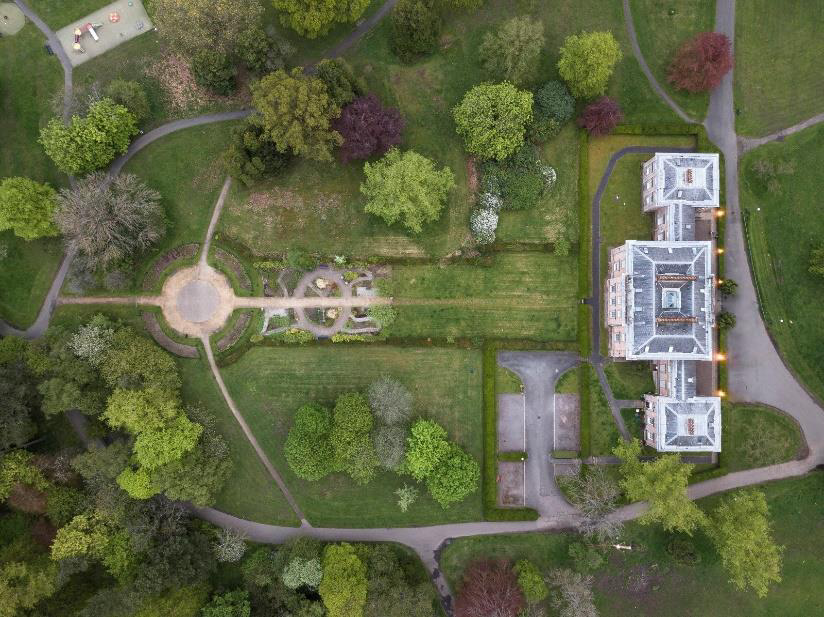History of King's Park
King’s Park through the ages
Present day King’s Park, formerly a private estate, is situated in an area of hilly countryside centred on Hundred Acre Hill next to the former steading of Meikle Aikenhead (demolished in 1928). Today King’s Park Primary School stands on the site of the old steading.
A 17th century mansion formerly occupied the current site of A listed Aikenhead House. It was built for the wealthy merchant James Hamilton, the first Earl of Abercorn and the Lord Provost of Glasgow from 1614-1629. In 1710 it became the home to Provost Hamilton’s great grandson James, twice Rector of Glasgow University. His son, also James, inherited the estate and later sold it to Colin Rae of Little Govan.
The Aikenhead Estate and the surrounding area, known today as King’s Park/Croftfoot, originally consisted of 250 acres of undeveloped land. In 192 the estate was offered to the Corporation of Glasgow for £10,000. Glasgow Council declined, and MacTaggart & Mickel and the Western Heritable Investment Company then acquired most of the remaining land to build 3,000 houses, adding to the 2,900 homes already built on the property.
In May 1930 Glasgow Council accepted Sir John MacTaggart’s offer of Aikenhead House and 68 acres of surrounding parkland as a gift to the city: today’s King’s Park.

Aikenhead House
The Hamilton mansion was destroyed by fire in the 18th century, and Aikenhead House (pictured below) was built on the site in 1806 for John Gordon, a West Indies merchant.
The house was designed in the then popular neoclassical style by architect David Hamilton (the ‘father of Glasgow architecture’) who also designed much of the Glasgow Museum of Modern Art building. Flanking wings, also designed by Hamilton, were added to the main house in 1823. The last private owner of Aikenhead House was Henry Erskine Gordon (1849-1929), the grandson of John Gordon.
On May 1st 1936 Aikenhead House was opened to the public as a costume museum. During World War II it was taken over by the military authorities and used for intelligence operations. After the war the building was used briefly to store much of the Burrell Collection of fine art, which had no permanent home at the time.
In the early 1970’s a small putting green next to Aikenhead House was a popular attraction, complemented by a cafe in the south wing of the house.
Aikenhead House was abandoned and boarded up in the late 1970s and became a target for vandals. Such was the building’s state of disrepair that by 1979 demolition was being considered; but because of the building’s A listed status no action was taken. In June 1984 Aikenhead House was sold by Glasgow Council and developed into 14 private flats.

Heritage in King’s Park
The trees in King’s Park include native species such as oaks, limes, sycamores, horse chestnuts and yews; and also exotic ‘specimen’ trees such as cypress, purple beech, red chestnut and monkey puzzle trees, fashionable plantings in the early 18th century.
While King’s Park is compact, it contains 5 designated heritage structures: A listed Aikenhead House, the B listed entrance gates, a C listed walled garden, a B listed sundial and a B listed stable (inside the NS parks yard and now used for storage).
The sundial next to the walled garden dates to 1885. It is a copy of the sundial at Newbattle Abbey in Midlothian, dating to 1635. Originally sited at Douglas Castle in Lanarkshire, it was moved to King’s Park in 1930. The sundial is divided into six sections:
❖ a series of steps and a base;
❖ an octagonal pillar;
❖ a row of sphinxes;
❖ a row of sundials and emblems;
❖ a row of bearded men; and
❖ an obelisk.
The inscription on it reads:
‘Horas Non Numero Nisi Serenas’
‘I do not count the hours unless they are serene’

